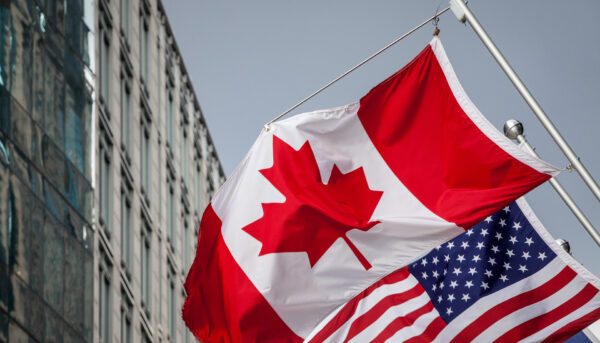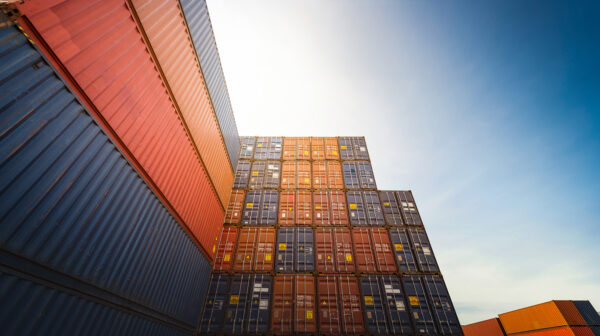Overview
Canadian export controls are set out in several Acts, regulations, and policies. A central piece of Canadian legislation is the Export and Permits Act (the “EIPA”).[1] The EIPA controls the export or transfer of certain goods, software, and technology where it is in the public interest to do so. EIPA controlled goods, software, and technology are referred to as “items”.
This article describes the framework of Canada’s export controls for military, dual use, and strategic items. Canada has also enacted legislation controlling other goods (for example, animals, plants, and medicines). The export control framework for these other goods is not covered here.
Generally, an exporter must obtain a permit in order to export controlled items. A responsible federal Minister may exercise his or her discretion to grant an export permit authorizing the export or transfer of a controlled item. Several Canadian entities are tasked with the administration and enforcement of Canada’s export controls. Non-compliance with Canada’s export control system may give rise to civil and criminal liability.
The Export And Import Permits Act
The EIPA relates to the export, transfer, and brokering of items (i.e., goods and technology). Under the EIPA the Governor in Council (federal cabinet) has established a list of items, called an Export Control List (“ECL”). The list includes items the export or transfer of which the Governor in Council has deemed necessary to control for particular purposes. These purposes include: (a) ensuring that military goods will not be made available to any destination where their use might be detrimental to the security of Canada; (b) to implement an intergovernmental arrangement or commitment; and (c) to ensure that there is an adequate supply and distribution of the article for defence or other needs.[2]
The Export Control List
The EIPA provides for the establishment of the ECL.[3] Under the EIPA the Governor in Council may revoke, amend, vary, or re-establish an ECL from time to time.[4] A schedule to the ECL categorizes items into nine groups (the “Groups”) which are described in further detail below.[5]
A Guide to Canada’s Export Control List
The ECL provides that certain items, when intended for export to the destinations specified, are subject to export control for the purposes of section 3 of the EIPA.[6] The ECL lists certain items destined to specified countries and referred to in A Guide to Canada’s Export Control List (the “Guide”).[7] The Guide is published by the government of Canada from time to time. It sets out a classification system and nomenclature describing items with the Groups.[8]
The Area Control List
The Area Control List (“ACL”) is a list of countries made under the EIPA. It includes countries to which the Governor in Council deems it necessary to control the export or transfer of items. Under the EIPA the Governor in Council may revoke, amend, vary, or re-establish an ACL from time to time.[9]
Export permits
A federal Minister, as designated by the Governor in Council, may issue to any resident of Canada applying for an individual export permit (“IEP”) to export or transfer an item in the ECL or ACL.[10] A permit may authorize the export or transfer of an item in such quantity and of such quality, by such persons, to such places or persons and subject to such other terms and conditions as described in the permit or regulations made under the EIPA.
The Minister may also, by order, issue generally to all residents of Canada a general export permit (“GEP”). A GEP may authorize the export or transfer to any country specified in the permit any items included in the ECL that are specified in the permit, subject to terms and conditions described in the permit.[11]
For example, GEP No. 12 – United States Origin Goods states that, subject to specific provisions of GEP No. 12, any person may, under the authority of this permit, export from Canada goods of US origin described in item 5400 of Group 5 of the Schedule to the ECL (“US Origin Items”). GEP No. 12 does not authorize the export of US Origin Items to Cuba, Korea, Iran, or Syria. Another example is GEP No. 41, which the Minister has issued in respect of Dual-use Goods and Technology to Certain Destinations.[12]
The Export Permits Regulations set out requirements respecting the information that permit applicants must provide under the export permit application process.[13] They also set out procedures governing the issuance and use of export permits. The regulations were made to align legal requirements with Global Affairs Canada’s practice and policy, and the Export Controls Online System (“EXCOL”).
The Trade and Export Controls Bureau of Global Affairs Canada is responsible for handling export permit applications, and making recommendations to the Minister respecting their issuance or non-issuance. The Trade and Export Controls Bureau publishes information respecting its practices and policy. Key information and services include the Export Controls Handbook, the EXCOL web-based site for submitting online permit applications, the Export and Import Controls System (“EICS”) interface and Electronic Data Interchange (“EDI”) to support the application, approval, and processing of export permits.[14] This flowchart illustrates the process for obtaining the permit.[15]
The Defence Production Act
Apart from the EIPA, other legislation is relevant to Canadan export controls. Under the Defence Production Act, (“DPA”) no person shall, unless the person is registered under the DPA, or exempt from registration, knowingly examine or possess a controlled good or transfer a controlled good to another person.[16] Under the DPA “controlled goods” means goods referred in the schedule to the DPA.[17] The DPA schedule refers to particular items that are controlled goods including: (a) defence articles; (b) listed items under Group 2 of the Guide; (c) listed items under Group 5 of the Guide; and (d) listed items under Group 6 of the Guide.
The Canada-US Defense Production Sharing Agreement (“DPSA”) concerns practices, policies and procedures covering procurement for defense purposes.[18] The Canadian Commercial Corporation (“COC”) guides Canadian exporters through the highly regulated government procurement system. US Defense Federal Acquisition Regulation Supplement 225.870 (“DFARS”) authorizes the COC to act as prime contractor for US Department of Defence contracts with a value over USD$250,000.[19]
Restricted Goods And Technologies List
Canada’s Special Economic Measures Act (“SEMA”) provides the government of Canada with the power to take economic measures against certain persons when it is in the public interest to do so. Specified public interests include international peace and security, gross and systematic human rights violations, or acts of significant corruption.[20] The Governor in Council may make orders prohibiting specified activities including the exportation by any person in Canada or Canadian outside of Canada of any goods or technology to a foreign state or a person in that foreign state.[21] Various regulations made under SEMA prohibit exports to designated persons and entities in various countries. For example, the Special Economic Measures (Russia) Regulations prohibits any person in Canada and any person outside of Canada to export any good to Russia or to any person in Russia if the good is described in the Restricted Goods and Technologies List or in schedule 5.1 titled “Goods and Technologies”.[22] Items in the Restricted Goods and Technologies List are listed and available online on the sanctions page of the Global Affairs Canada website.[23]
Administration and enforcement
Various Canadian government entities are responsible for the administration and enforcement of export controls in Canada including the following:
- The Canada Border Services Agency (the “CBSA”) deals with compliance at Canada’s frontiers;
- Global Affairs Canada, Trade Controls Bureau (the “GAC”) deals with permits; and
- Royal Canadian Mounted Police (“RCMP”) deals with criminal law enforcement.
Canadian export controls legislation includes the EIPA and its Regulations (including the ECL), and the DPA and its regulations, SEMA and its regulations (including the Restricted Goods and Technologies List). Potential sanctions for non-compliance range from the assessment of civil administrative monetary penalties to criminal penalties.[24]
Reproduced from Practical Law with the permission of the publishers. For further information, visit practicallaw.com
[1] Export and Import Permits Act, R.S.C., 1985, c. E-19.
[2] See section 3 of the EIPA. Export Control List, SOR/89-202.
[3] See section 6 of the EIPA.
[4] See section 6 of the EIPA.
[5] See section 2 of the ECL.
[6] See section 2 of the ECL.
[7] Global Affairs Canada published a new version of the Guide on November 21, 2022 which went into effect on December 21, 2022. See this link: https://www.international.gc.ca/trade-commerce/guides/export_control_list-liste_exportation_controlee_2021.aspx?lang=eng
[8] See section 2 of the ECL.
[9] See section 6 of the EIPA.
[10] See sections 2 and 7 of the EIPA.
[11] See subsection 7(1.1) of the EIPA.
[12] General Export Permit No. 41 – Dual-use Goods and Technology to Certain Destinations, SOR/2015-200.
[13] Export Permits Regulations, SOR/97-204.
[14] See: Global Affairs Canada, “Export Controls, Key Information and Services”, online: https://www.international.gc.ca/controls-controles/about-a_propos/expor/before-avant.aspx?lang=eng
[15] From: https://www.international.gc.ca/controls-controles/export-exportation/exp_ctr_handbook-manuel_ctr_exp-p2.aspx?lang=eng
[16] Defence Production Act, R.S.C., 1985, c. D-1, subsection 37(1).
[17] See section 35 of the DPA.
[18] See DPSA cited by the Canadian Commercial Corporation, “Services, US. DoD Prime Contractor.
[19] DFARS, 225.870 “Contracting with Canadian Contractors”, online: https://www.acquisition.gov/dfars
[20] SEMA, S.C. 1992, c. 17 section 3 “Purpose of Act”.
[21] See SEMA, paragraphs 4(2)(b) and (c).
[22] Special Economic Measures (Russia) Regulations, section 3.06(1).
[23] See: Regulations Amending the Special Economic Measures (Russia) Regulations, SOR/2022-67.
[24] See, for example, the Customs Act, R.S.C. 1985, c. 1 (2nd Supp), section 109.1 respecting certain administrative monetary penalties, and the EIPA which provides that a person who contravenes that Act or regulations of a hybrid criminal offence is subject to criminal sanctions.





